Heat got ‘ya down? Here’s the second installment of our Summer Survival Guide!

TIP #2:
KEEP COOL
…With icy cold drinks
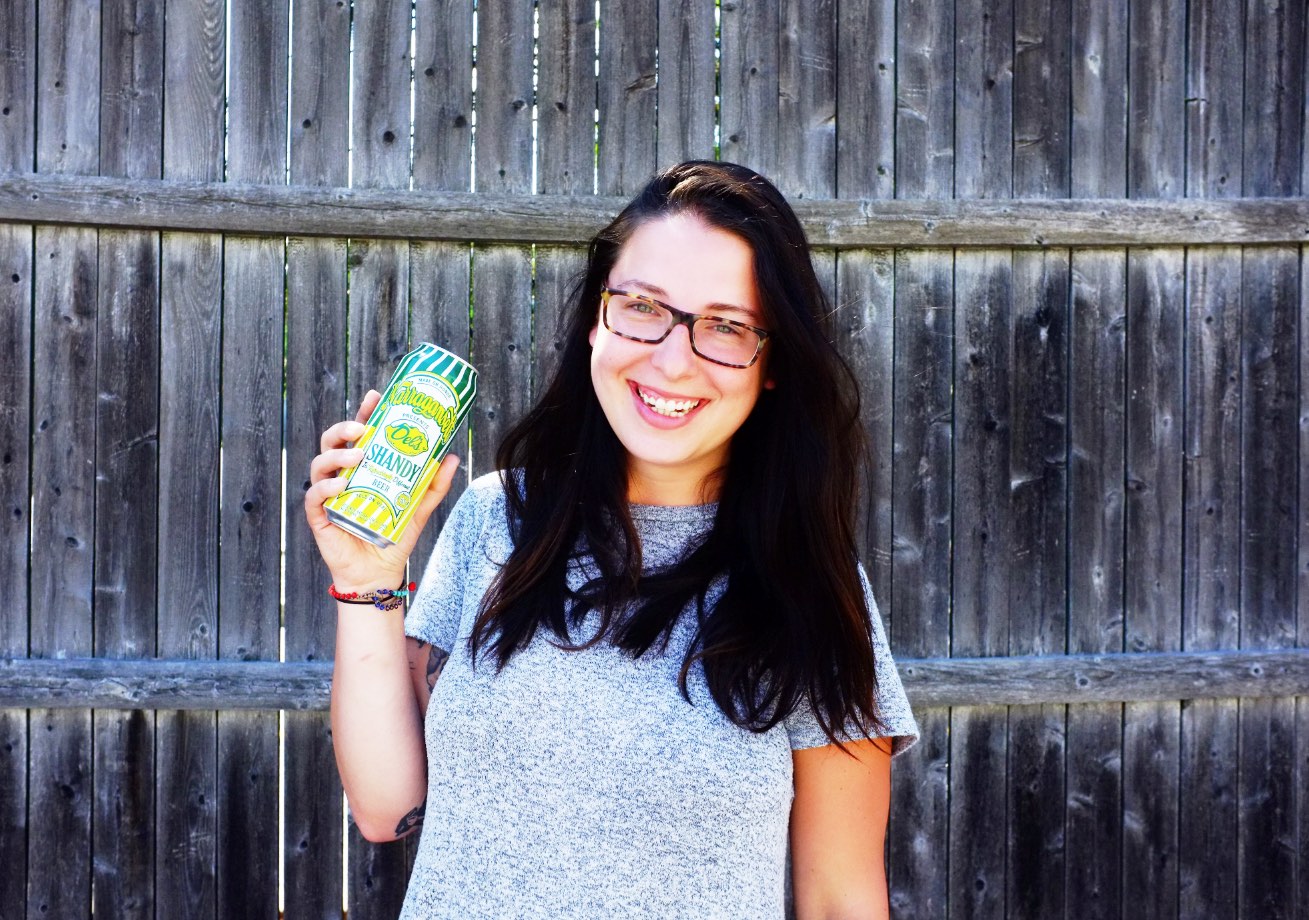
Click here for our previous tip, and tune in next week for Part 3!
###

Heat got ‘ya down? Here’s the second installment of our Summer Survival Guide!


Click here for our previous tip, and tune in next week for Part 3!
###
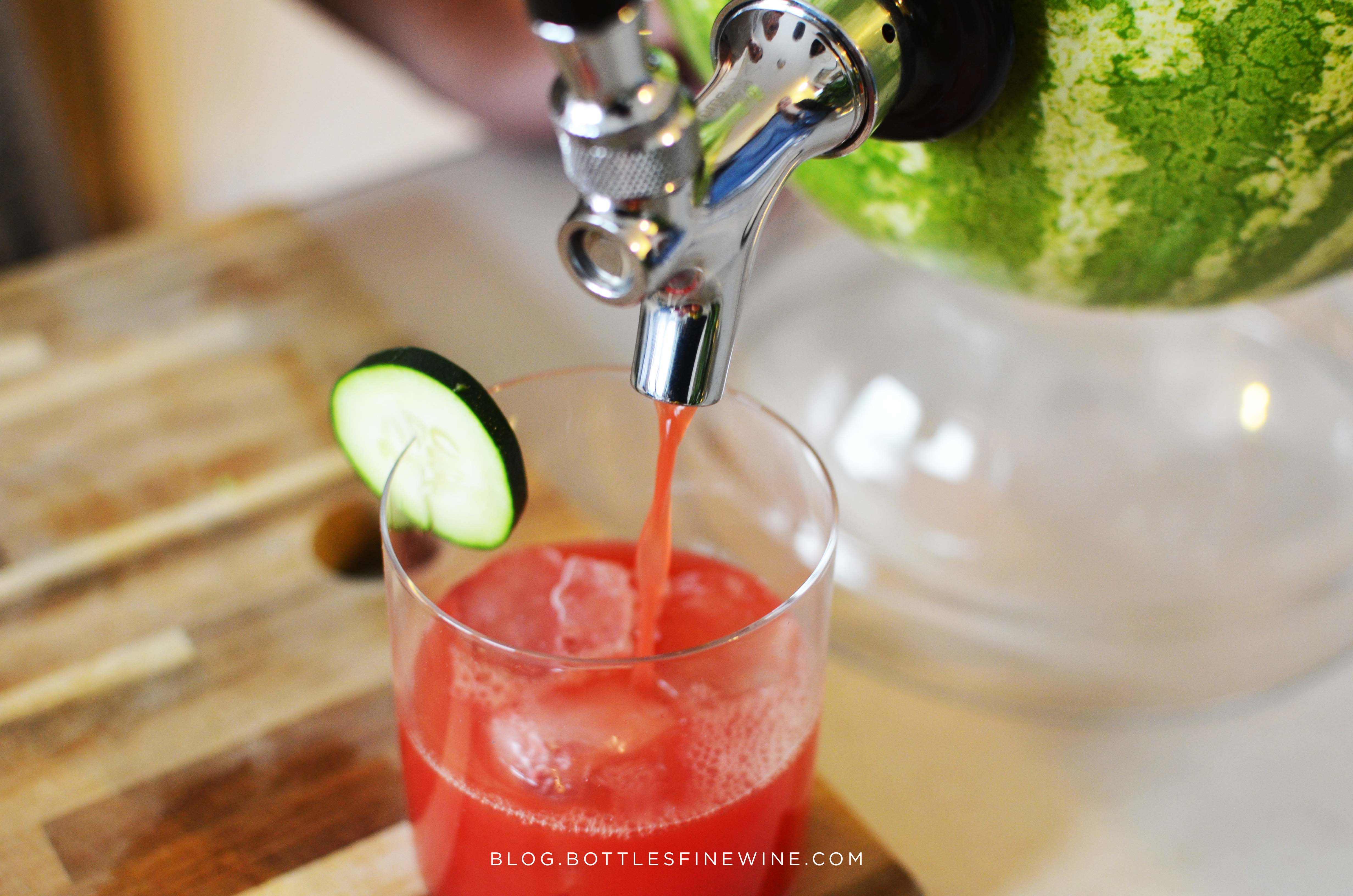 If you’re looking for a way to amp up your summer get-together that requires minimal effort but delights even the most cynical New Englander, look no further. For some unknown reason, filling a non-conventional vessel with fresh juice and booze provokes giddiness and pure joy. I should know – I’ve tapped countless pumpkins and pineapples and still get excited to see fresh cocktails come out of the spout.
If you’re looking for a way to amp up your summer get-together that requires minimal effort but delights even the most cynical New Englander, look no further. For some unknown reason, filling a non-conventional vessel with fresh juice and booze provokes giddiness and pure joy. I should know – I’ve tapped countless pumpkins and pineapples and still get excited to see fresh cocktails come out of the spout.
Below are some tips and instructions on how to tap a summer classic – the watermelon. With a couple of simple tools and about 20 minutes of effort (tops), you (and your watermelon) will be the hit of the summer.
I used Square One Cucumber Vodka to spike our juice, but feel free to get creative and mix it up with other spirits. Whether you want to tap a watermelon (or a cantaloupe)! you can follow these instructions. Add gin, vodka, tequila – whatever your heart desires, and feel free to garnish with fresh herbs for extra flair!
You will need:
1 watermelon (or fruit vessel of your choice)
1 keg spout (Amazon is your friend – it shouldn’t cost more than $15)
A cutting board
A chef’s knife
A paring knife
A large, sturdy spoon or ice cream scoop
A large bowl
A small bowl (to rest the melon on)
A blender
Booze of your choice (a 750ml bottle is plenty for average sized melons), such as Square One Cucumber Vodka.
When selecting your melon, look for one that can stand upright on its own and has somewhat of a flat-sided surface (that’s where you’ll put your tap). For a juicy watermelon, be sure to select one with a yellow base or side. It may not be pretty to look at, but it’s a sign that the melon is ripe, as the yellow spot is where it sat during the ripening process.
Using the chef’s knife, level the bottom of your melon (if it doesn’t stand totally straight on its own). Cut slowly, taking off just a little at a time. The exposed fruit should be mostly pith and rind, with little to no pink showing.
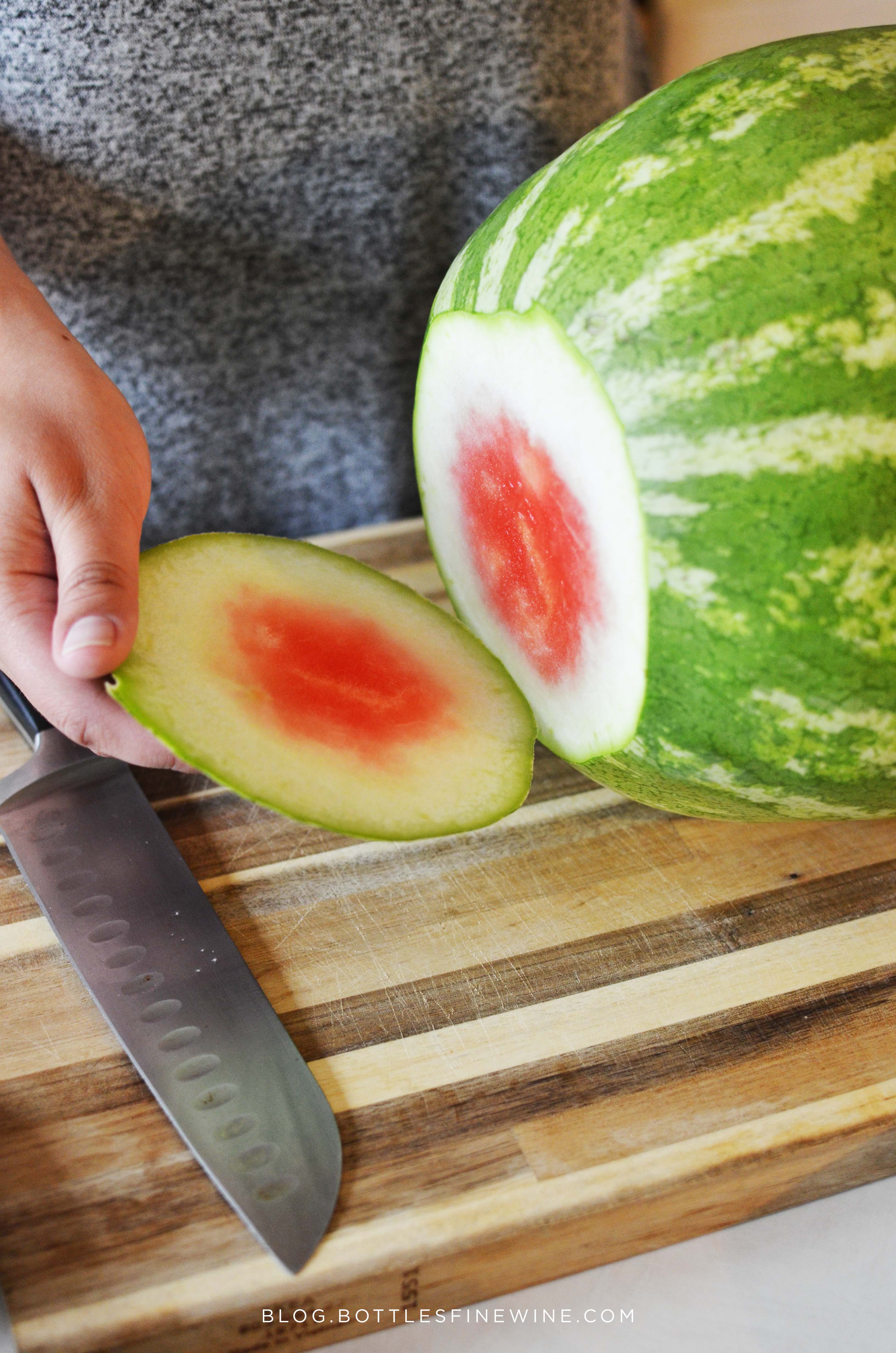 Next, cut 1/4 off of the top of the melon, giving yourself enough room to scoop out the flesh and plenty of space to insert the spout. Scoop out the insides, reserving them in your large bowl. Be careful not to scoop too close to the bottom. Save the top as a lid for the finished watermelon “keg.”
Next, cut 1/4 off of the top of the melon, giving yourself enough room to scoop out the flesh and plenty of space to insert the spout. Scoop out the insides, reserving them in your large bowl. Be careful not to scoop too close to the bottom. Save the top as a lid for the finished watermelon “keg.”
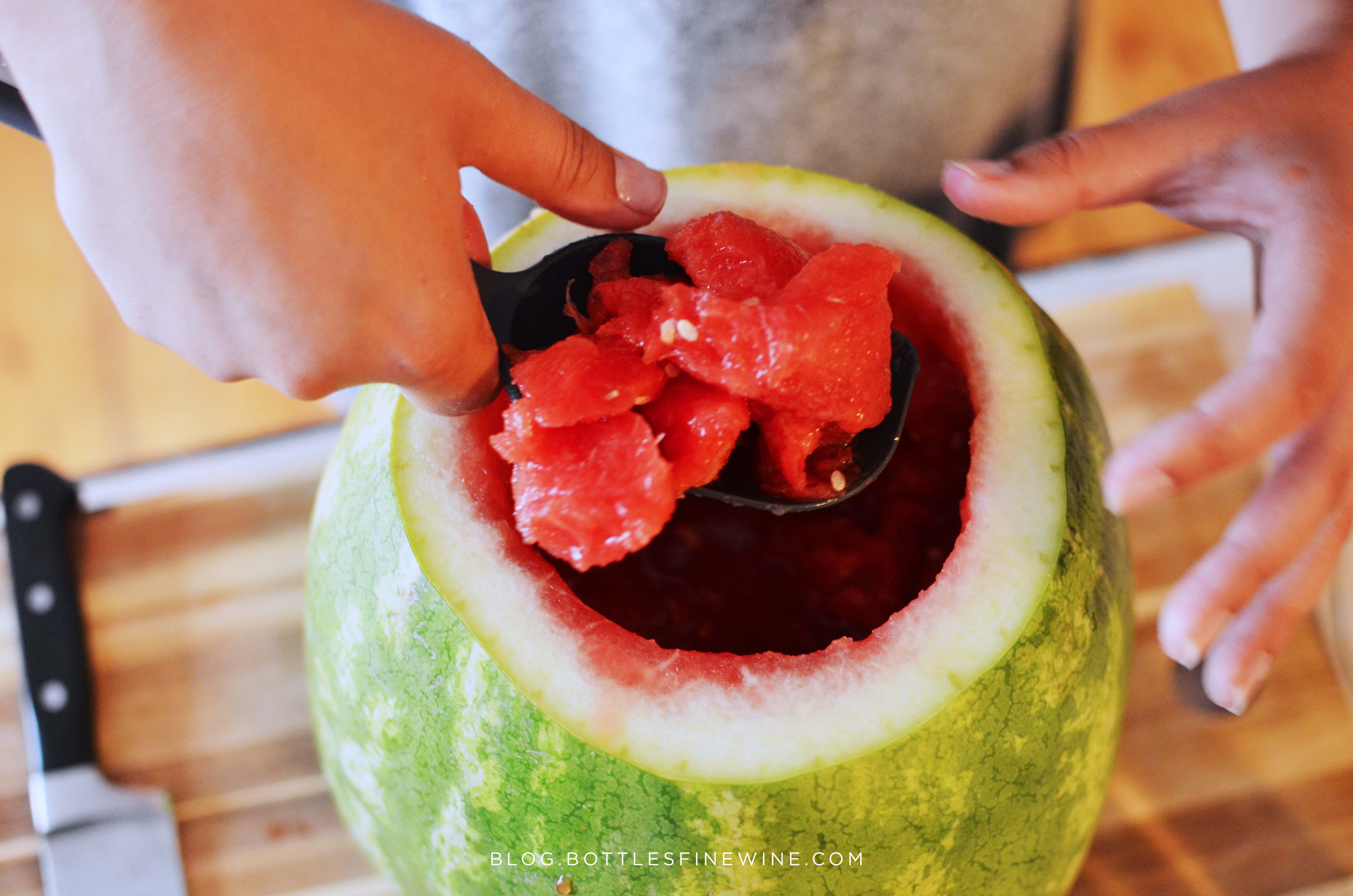 Place the small bowl upside down and rest your melon on it. From there you can gauge where you’d like to insert the spout. Keep in mind that it will have to be submerged low within in the cocktail for it to work, but not so low that your guests will have a hard time pouring into their drink. I’ve always had luck cutting about two inches below the middle of the melon.
Place the small bowl upside down and rest your melon on it. From there you can gauge where you’d like to insert the spout. Keep in mind that it will have to be submerged low within in the cocktail for it to work, but not so low that your guests will have a hard time pouring into their drink. I’ve always had luck cutting about two inches below the middle of the melon.
Once you have your designated spot, make an indentation by carefully putting medium pressure on the pourer, and twisting it lightly into the fruit. Once you have an outline, carefully use your paring knife to cut the hole out, starting out small and cutting away slowly, stopping now and then to test and see if your pourer fits.
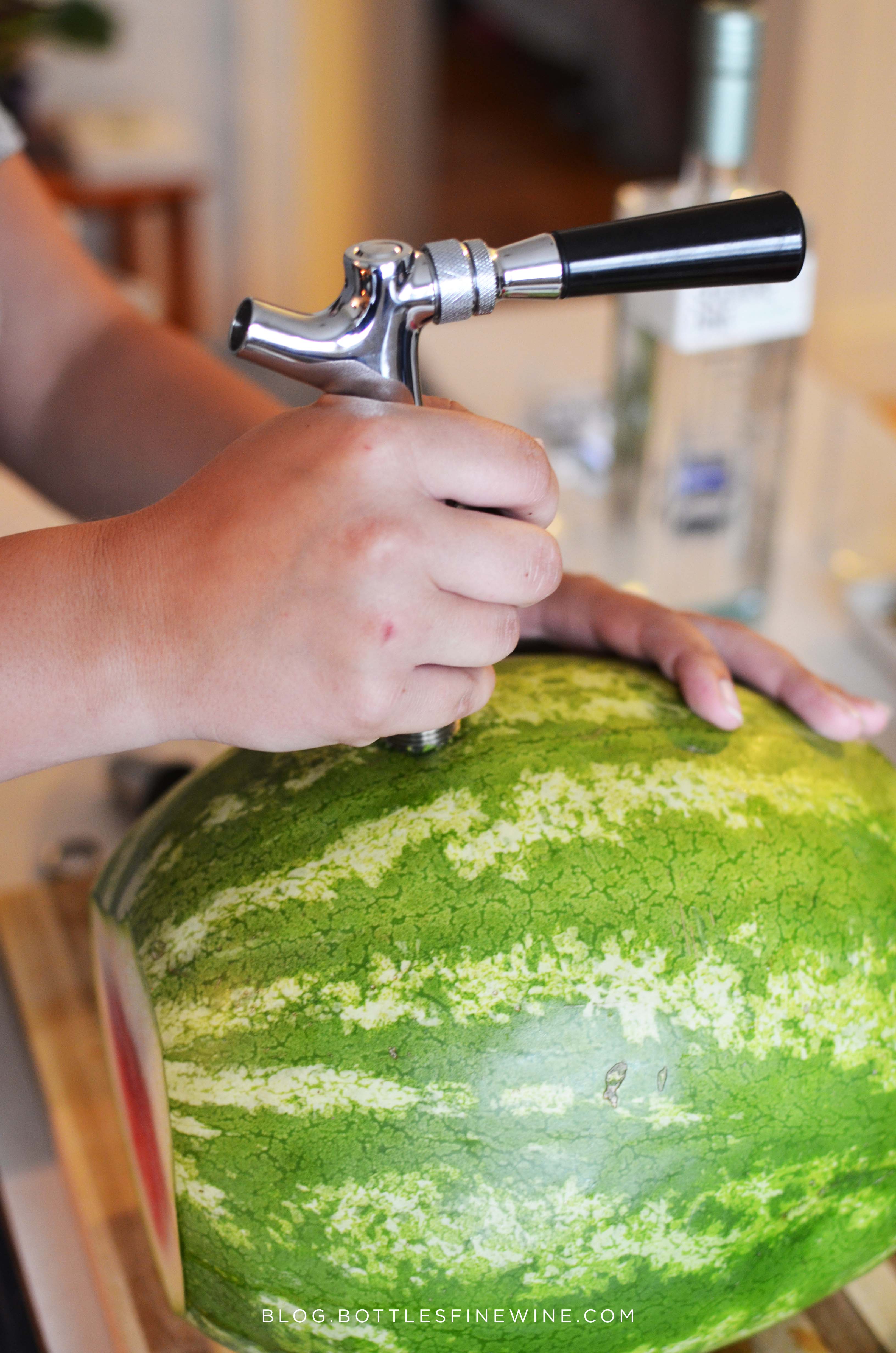 Once your spout is inserted, assemble the washers inside the melon according to the manufacturer’s instructions. These washers will hold the spout in place.
Once your spout is inserted, assemble the washers inside the melon according to the manufacturer’s instructions. These washers will hold the spout in place.
Next, put the fruit you’ve carved out of the melon into a blender, and liquify.
Now you’re ready to assemble your cocktail. I recommend using a 3:1 ratio of juice to booze. This keeps the cocktail fairly light if you’re out soaking up the New England sun on a hot day. The ratio will change, though, based on the size of your melon. If it’s on the larger size, you’ll want to use a touch more spirit.
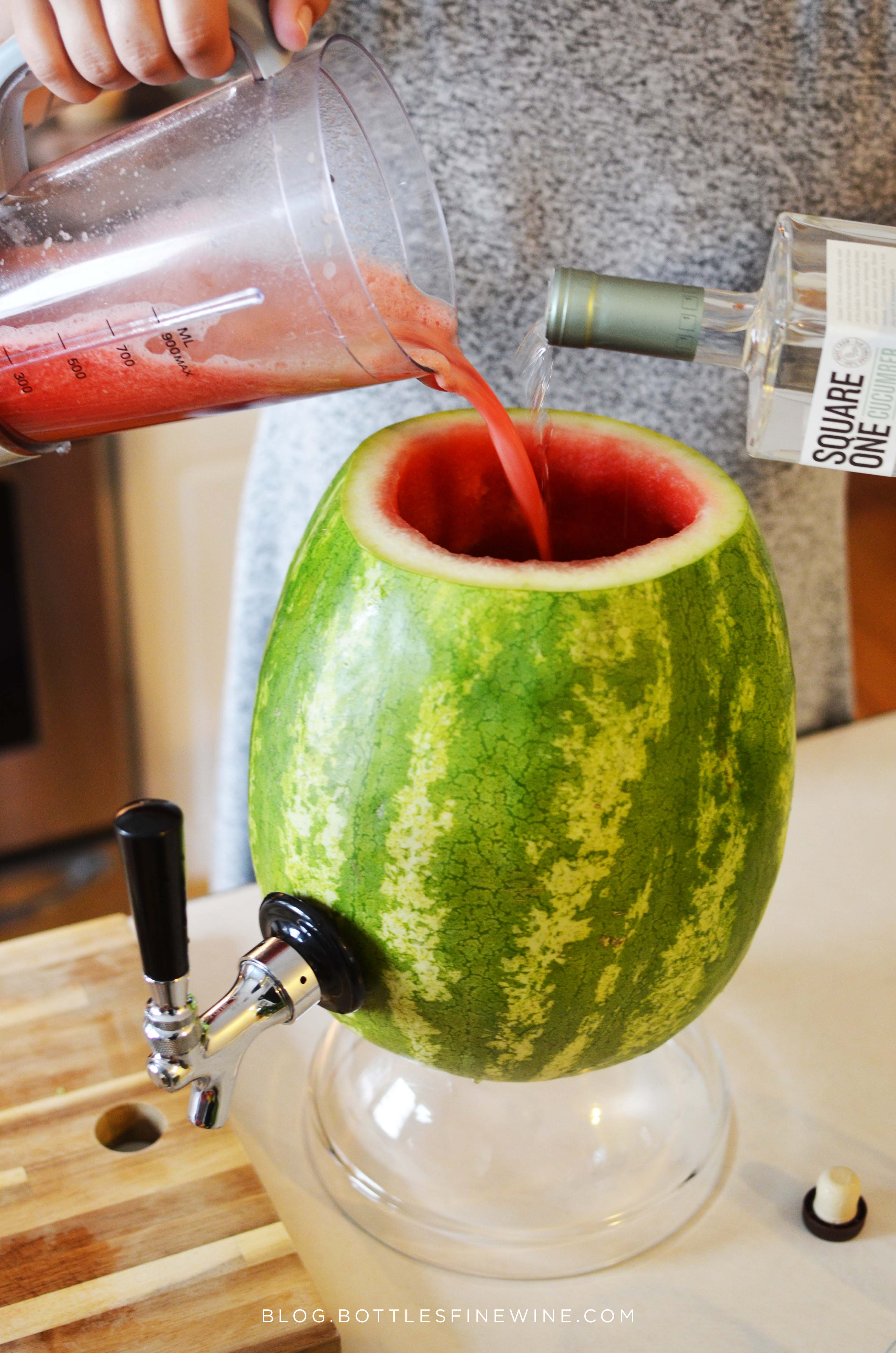 Once you have your liquids measured, add them to your melon, stir, and get to drinking! If you plan on putting the top of the melon back on to cover the juice, keep it slightly ajar, as some air circulation is needed to ensure a robust cocktail stream.
Once you have your liquids measured, add them to your melon, stir, and get to drinking! If you plan on putting the top of the melon back on to cover the juice, keep it slightly ajar, as some air circulation is needed to ensure a robust cocktail stream.
Serve over ice, and garnish with fresh mint, basil or cucumber.
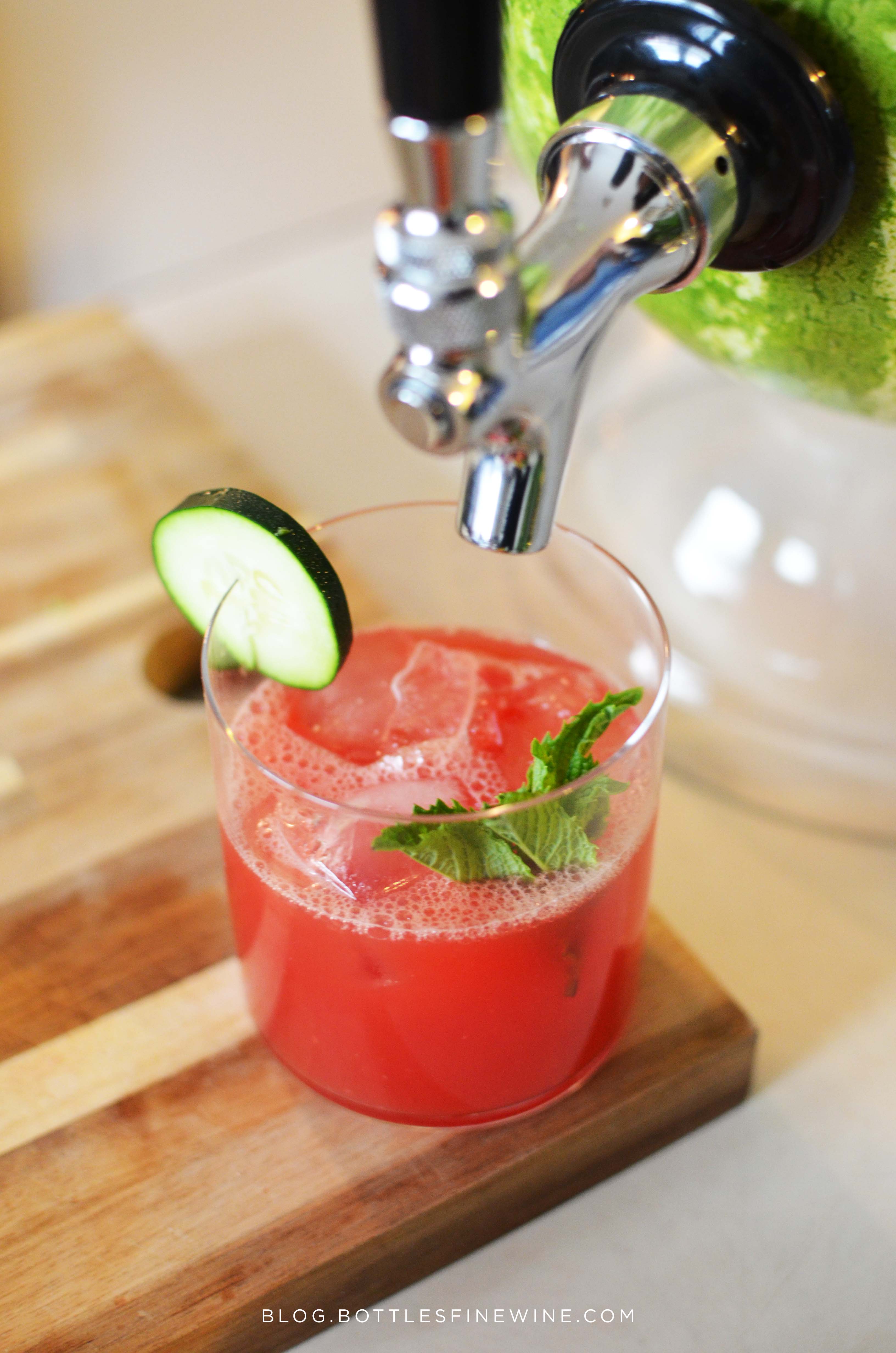 Cheers – have fun with this, and Happy Summer!
Cheers – have fun with this, and Happy Summer!
-Alex
###
You’ve heard them since you were a kid. They’re the rules our grandmothers repeated summer after summer, said with love, to keep us safe: Wear sunscreen. Wear a life jacket. Don’t go swimming on a full stomach.
Well we’ve updated that list for the 21+ set. Consider them the new rules for surviving summer for those of legal age, created by us, to keep you safe while enjoying a drink or two in the summer heat. We’re sharing our tasty tips over the next few weeks, in a 4-part summer series. Herewith, Part 1:

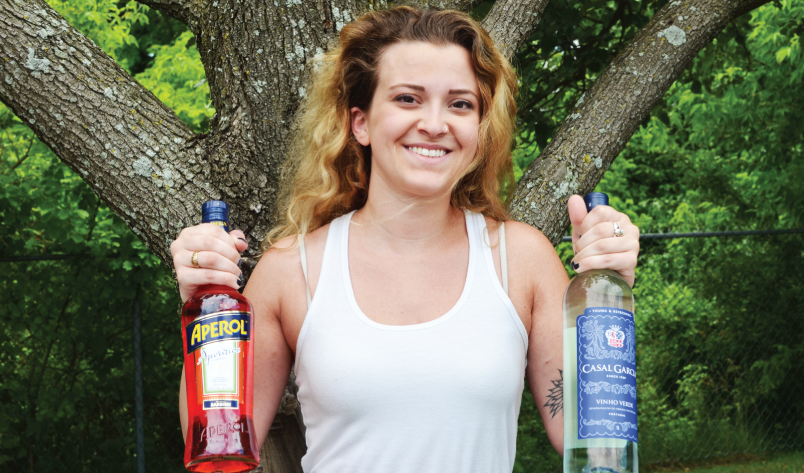
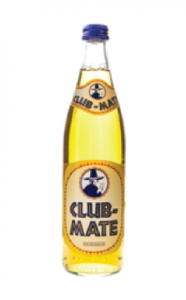 CLUB MATE YERBA MATE TEA
CLUB MATE YERBA MATE TEA
It couldn’t be easier. Come in store, tell us a bit about your dad and we’ll help you find the
bottle he’ll love this Father’s Day. Heck we’ll even wrap it for you. It’s that simple. Here are our top picks, a mix of hard-to-find, new-in-store, and just plain delicious.
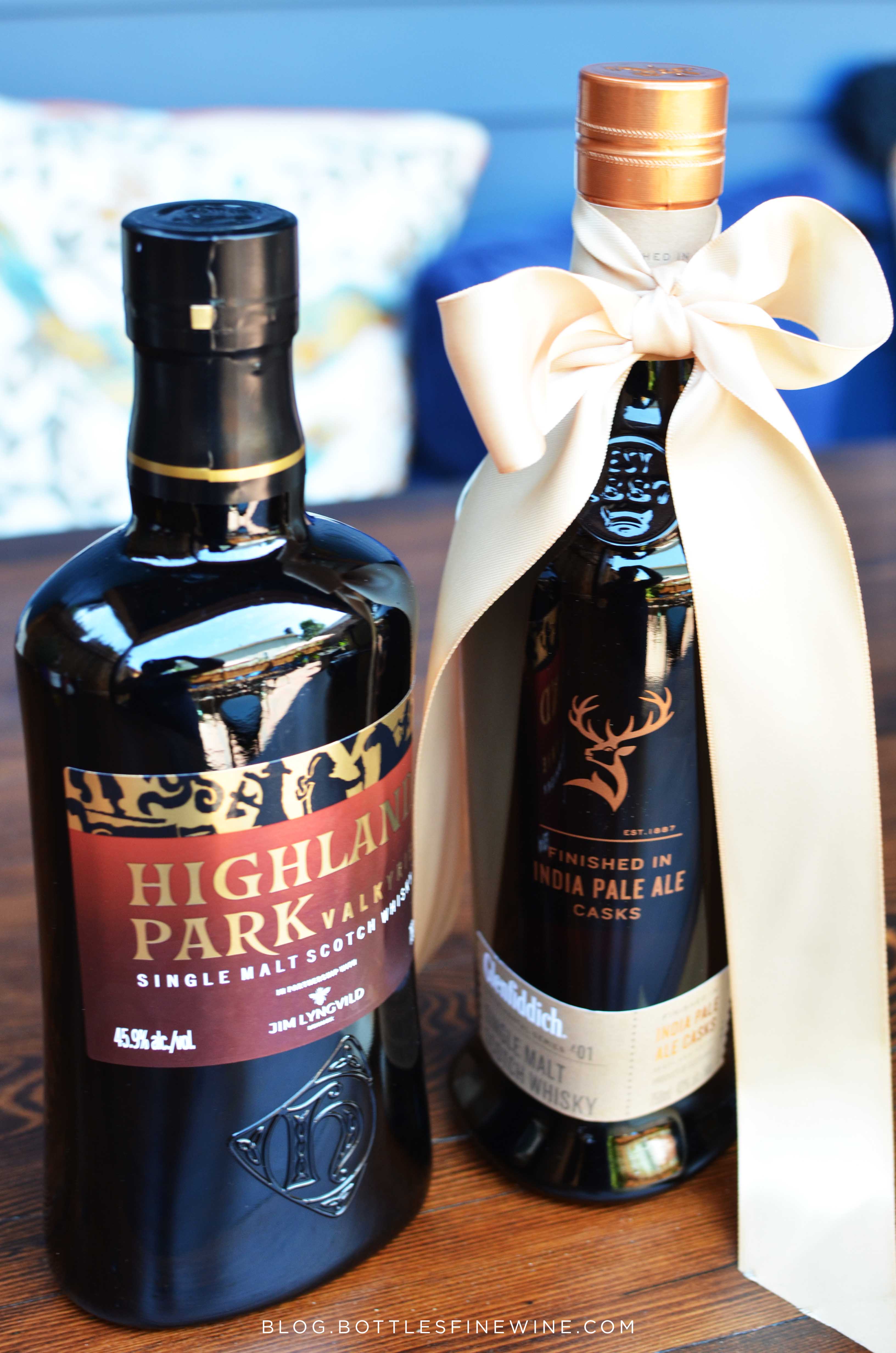
The newest offering from Highland Park is the first in a three-bottle series showcasing “Viking Legends.” Don’t let this bottle’s lack of an age designation fool you. It has wonderful fruit and spice flavors and is remarkably smooth at 92 proof. It’s brand-spanking new and is already racking up the awards. Let your father know he’s as important to you as Odin!
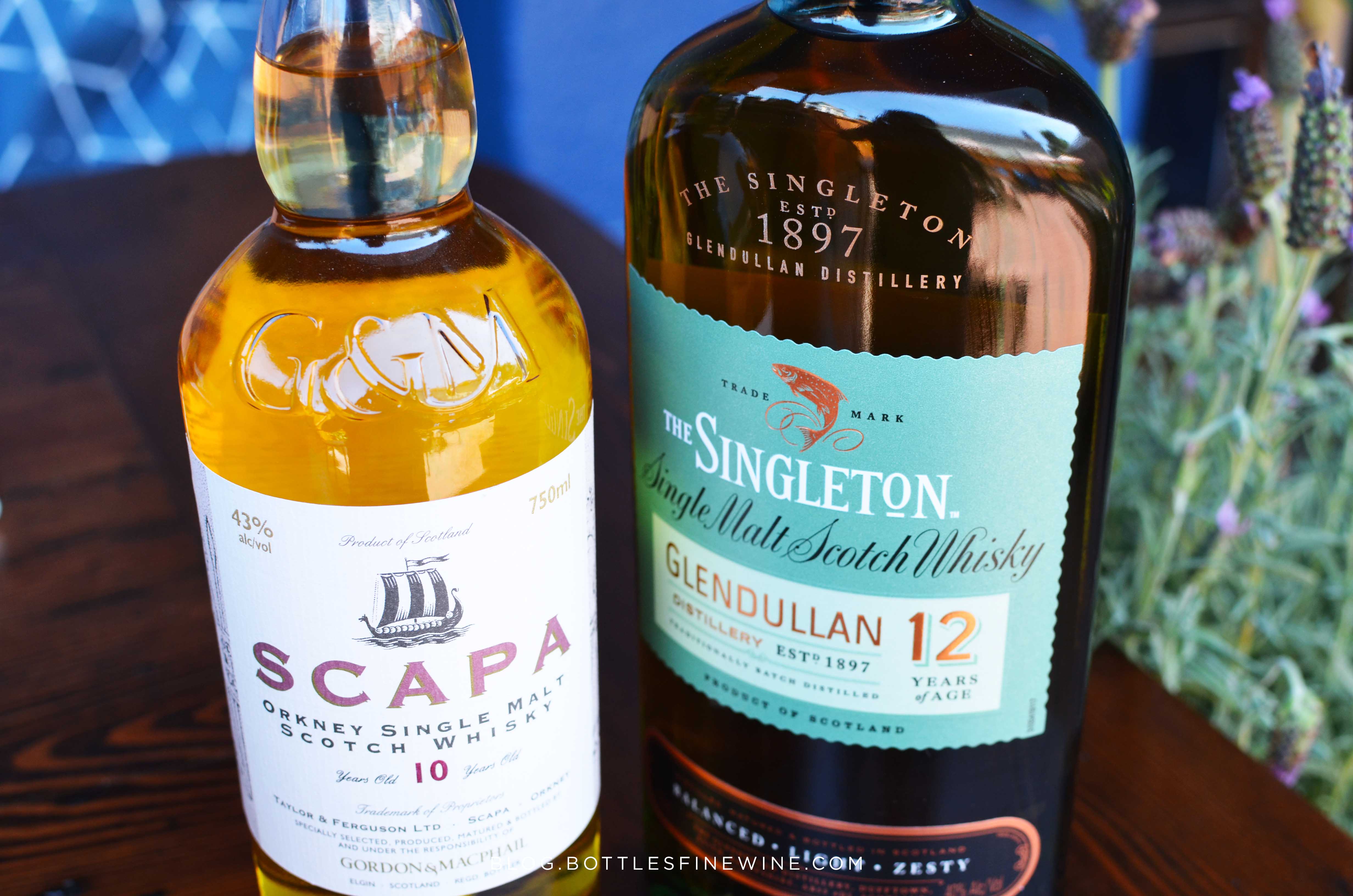
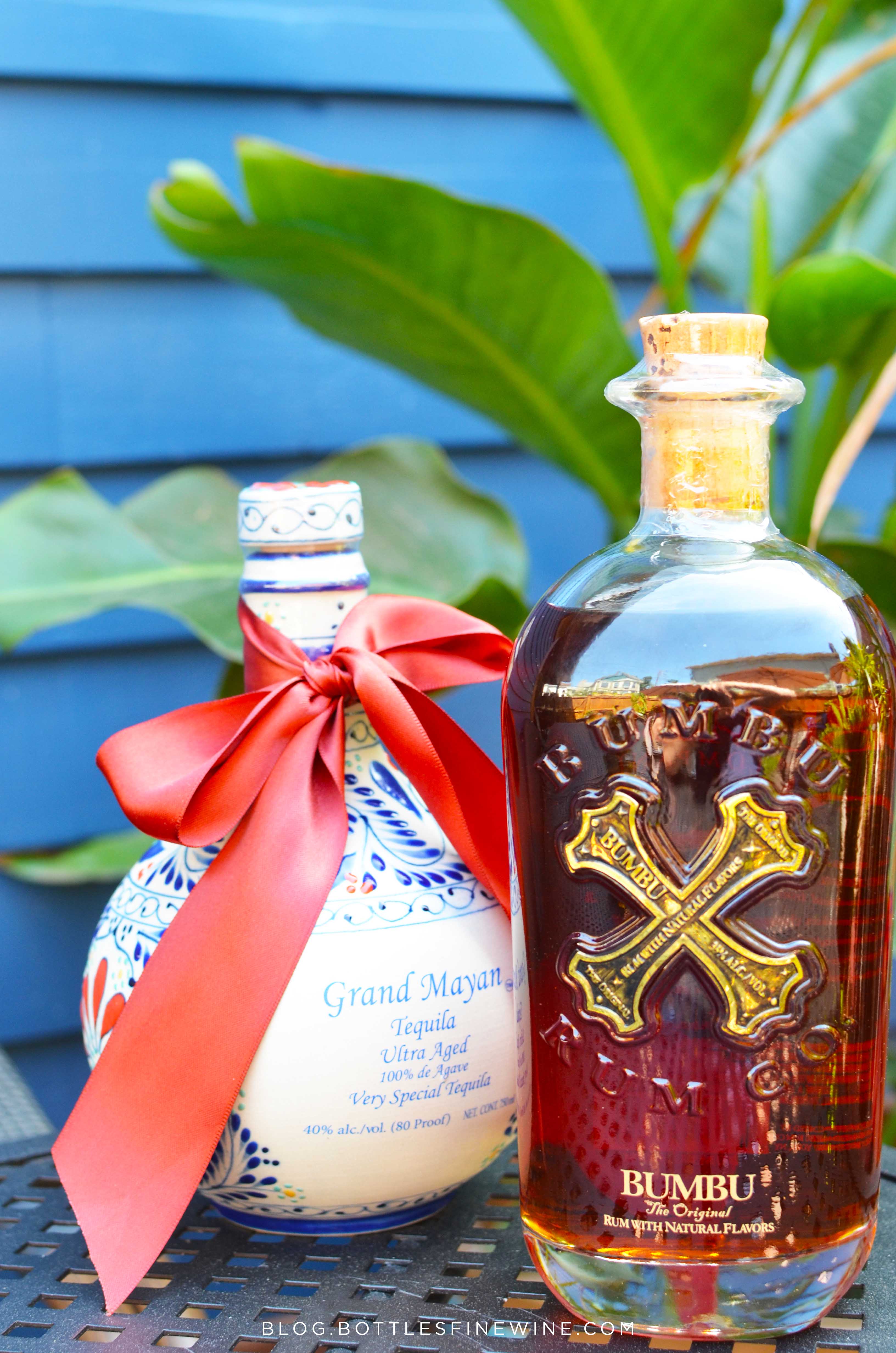
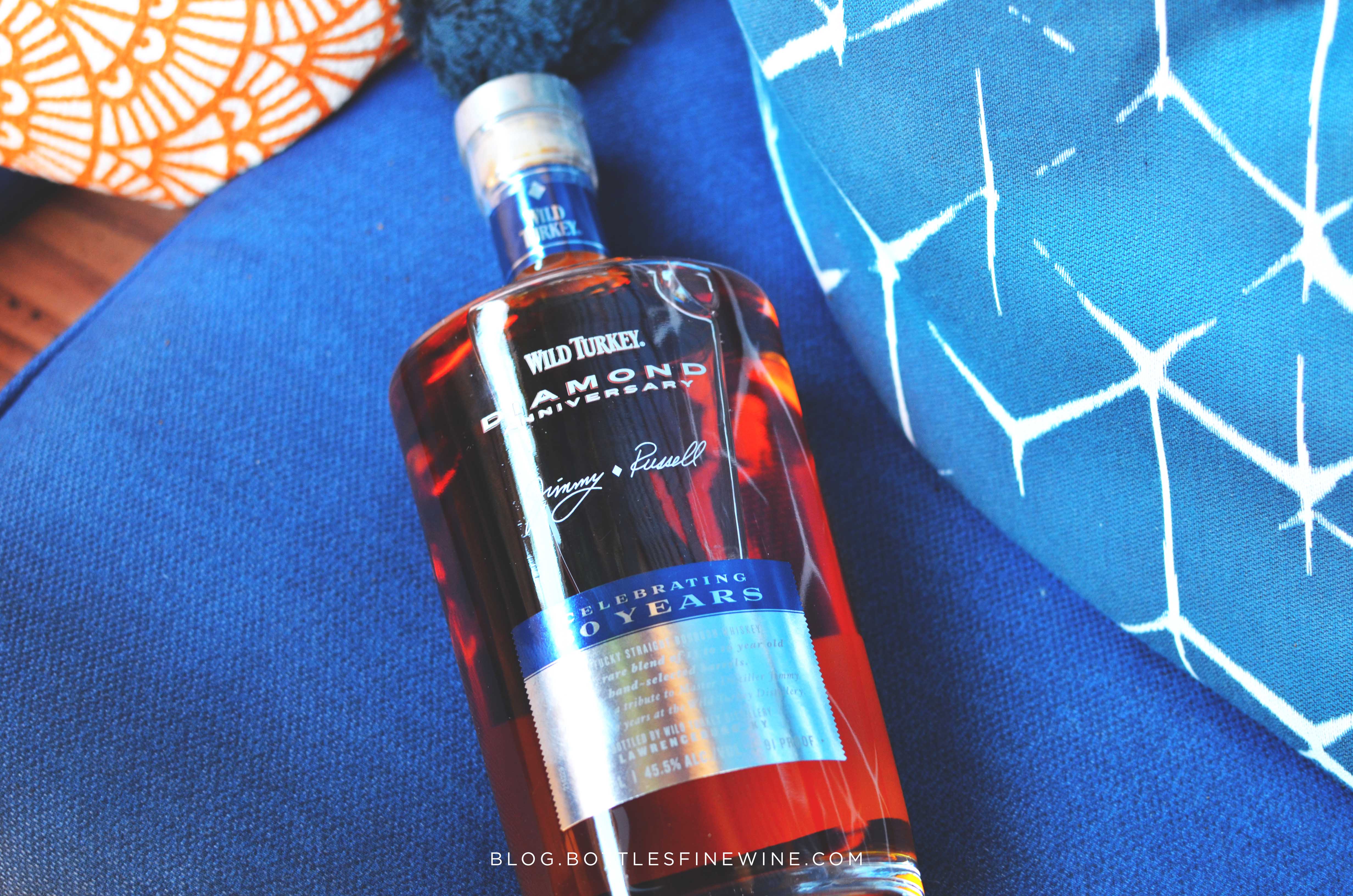
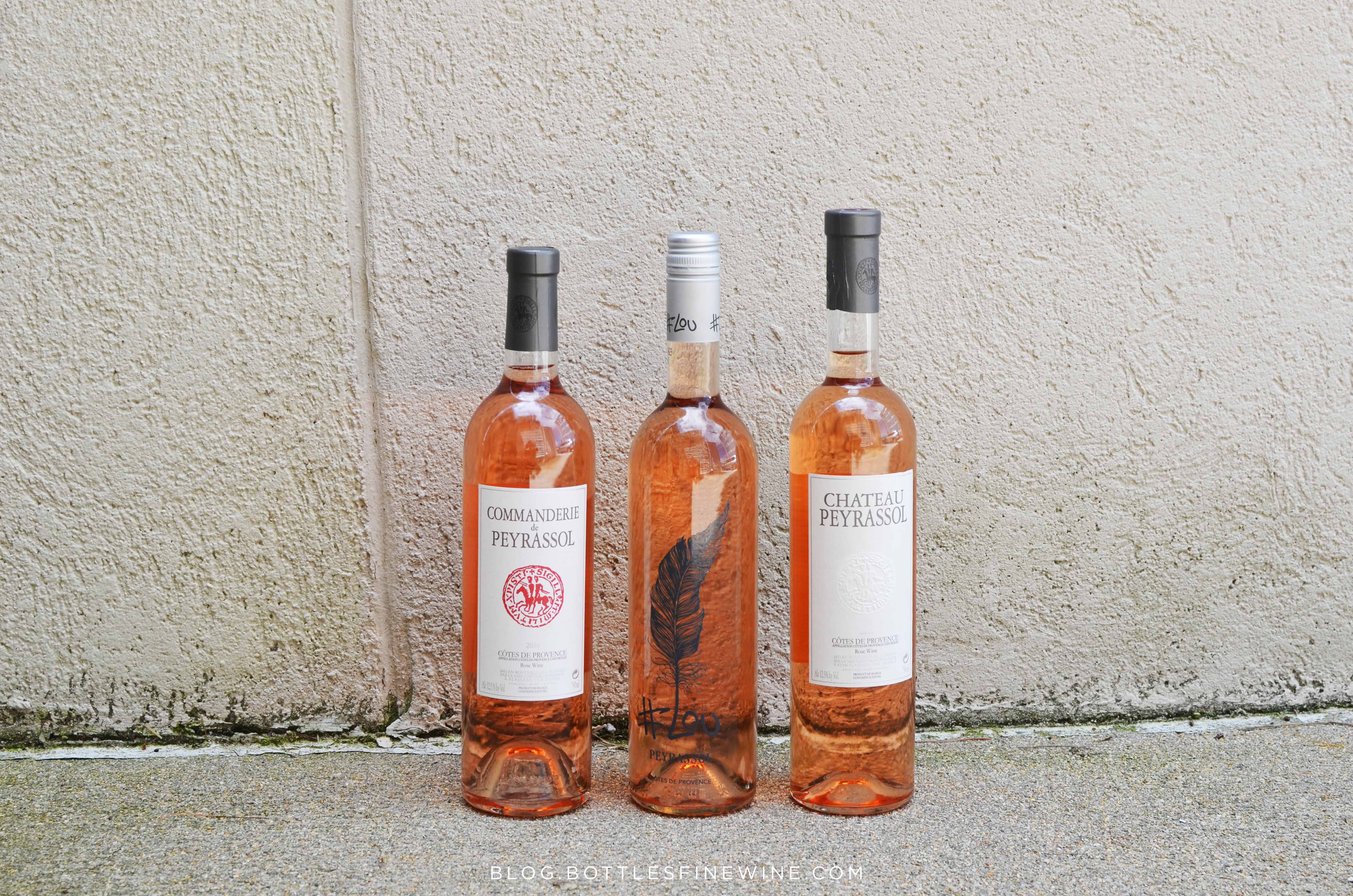 In a word, amazing.
In a word, amazing.
First, some context: Even if you’re not a history buff, the story of the Peyrassol domain is pretty astounding. The estate was founded in the 13th century by the Knights of the Templar on the site of their Commanderie. (Yes, those same Knights who were dedicated to protecting the crusaders en route to the Holy Land.) Winemaking has continued on that very same land, uninterrupted over the centuries, under the command of various powers and families, to this day. And with that amount of practice and experience under its belt, it’s no wonder that Peyrassol produces wines that are considered the benchmark against which all other Provencal rosés are measured.
Today, Peyrassol adheres to strict organic guidelines in the vineyard, eschewing synthetic fertilizers, pesticides and fungicides for natural methods. The wines are a beautiful expression of the region’s clay and limestone terroir, capturing the very essence of Provence: fresh, refined elegance.
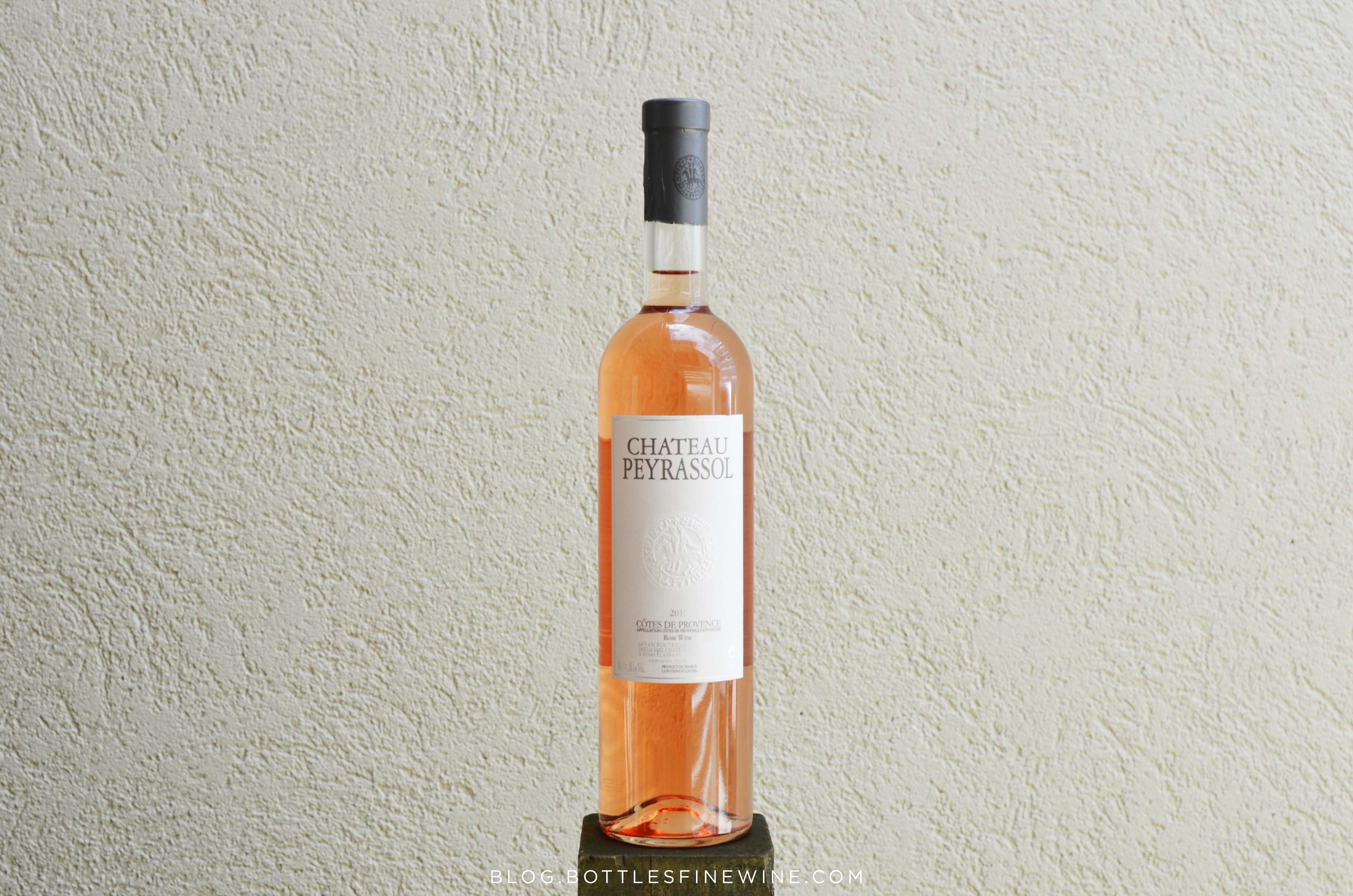
The creme de la creme of the Peyrassol rosé collection is the Chateau de Peyrassol. Made with grapes harvested from the domain’s oldest vines, the wine gets its darker color, character and concentration from a long maceration period. It is a more full-bodied rosé, with notes of citrus, peach and apricot. It’s lively yet delicate, and is a very special bottle.
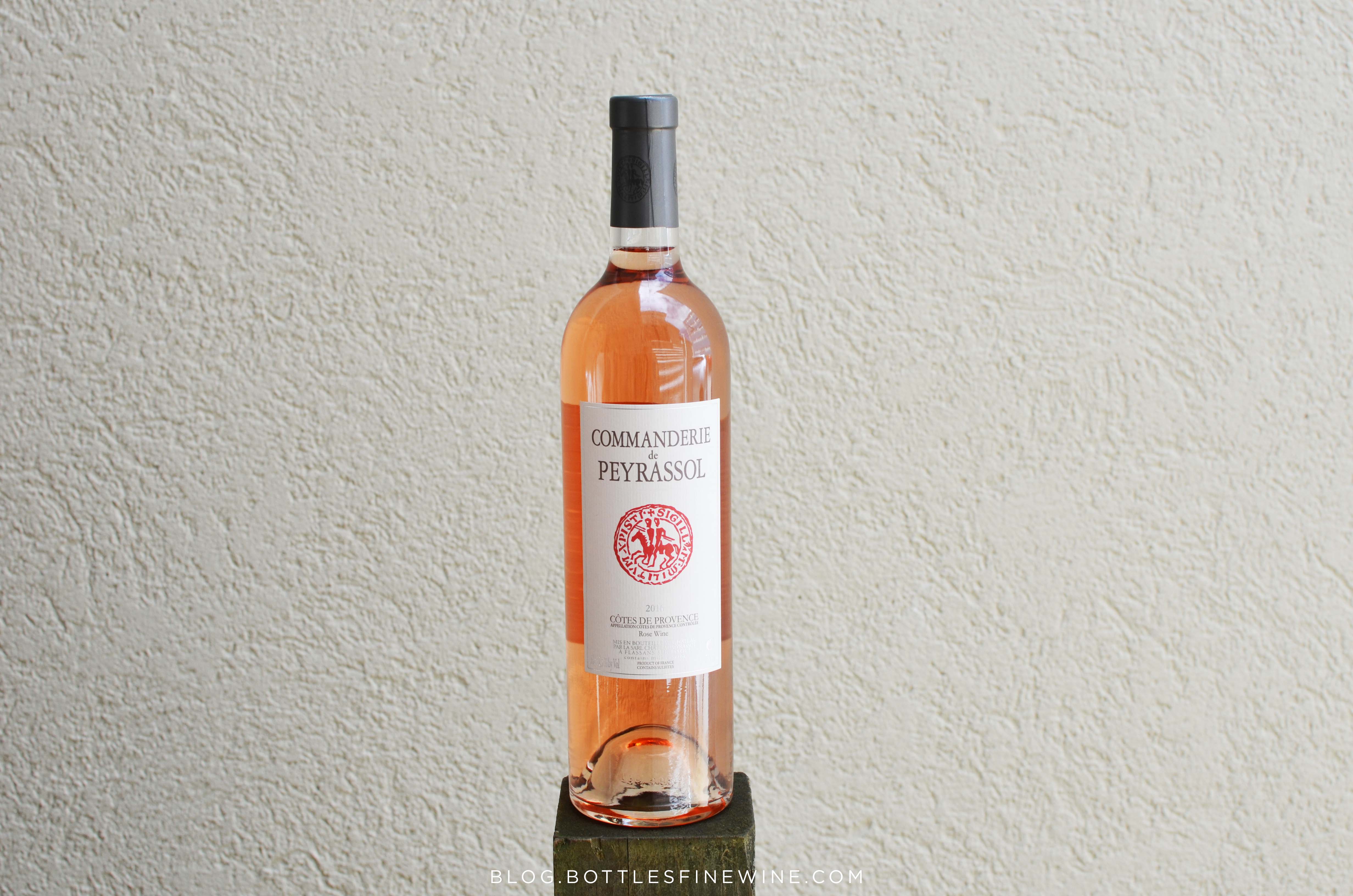
By comparison, the Commanderie de Peyrassol is a bit more traditional: it’s lighter in body with more minerality. It starts with lovely fruit blossom aromas, has refreshing flavors of watermelon and peach and finishes on a silky, stony note. The domain considers it the workhorse of the estate.
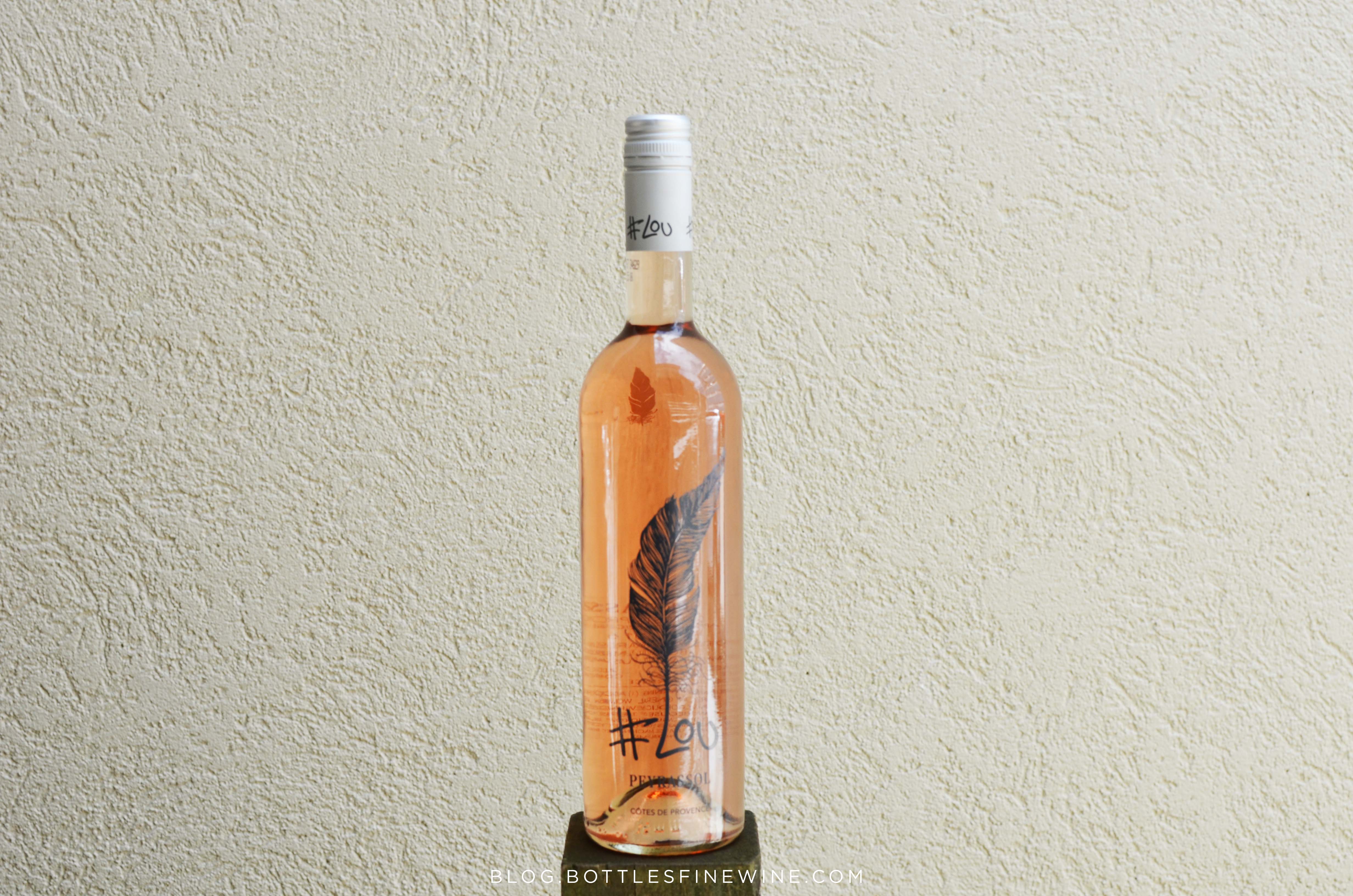
The newest addition to the Peyrassol lineup is entry-level-priced #Lou. It’s a highly-drinkable rosé for those both just getting into pink wine, as well as those of us who drink it year-round. It has a crisp start, fills your mouth with wild strawberries and citrus flavors, then finishes with mineral notes.
All three wines are on sale at Bottles through June 15th, 2017, at pricing meant to encourage your exploration of this historical and excellent estate. We think you’ll enjoy them as much as we do.
— #Lou: $11.99 (or just $10 a bottle with a 12-btl case purchase)
— Commanderie de Peyrassol: $19.99 (or just $16.66 a bottle with a 12-btl case purchase)
— Chateau de Peyrassol: $24.99 (or just $20.83 a bottle with a 12-btl case purchase)
(additional case discounts and rewards points do not apply)
All prices subject to change.
###

Summer, warm weather, picnics and holiday parades – a perfect time to enjoy a fine cigar. My selection is the Montecristo #2 handmade in the Dominican Republic.
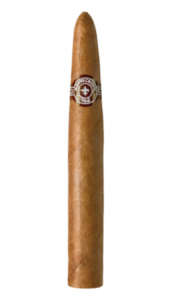 Many consider the famous Montecristo cigar brand to be the finest cigar in the world. Montecristo is among the youngest (the most recent addition was Cohiba) of the traditional Cuban cigars now made in the Dominican Republic. It was founded in 1935. Our offering is hand rolled using high quality long filler and binder tobaccos. It is then finished with a USA Connecticut shade wrapper. This refined smoke starts mild-to-medium and remains consistent throughout the entire cigar. It’s one of our most popular cigars.
Many consider the famous Montecristo cigar brand to be the finest cigar in the world. Montecristo is among the youngest (the most recent addition was Cohiba) of the traditional Cuban cigars now made in the Dominican Republic. It was founded in 1935. Our offering is hand rolled using high quality long filler and binder tobaccos. It is then finished with a USA Connecticut shade wrapper. This refined smoke starts mild-to-medium and remains consistent throughout the entire cigar. It’s one of our most popular cigars.
At 6 x 50, the #2 has the same roll as the familiar Toro shape, but it has a tapered head, hence the Torpedo designation.
A brief historical side note: Before the advent of radio, it was common place for the rollers to be informed and entertained by a reader or lector. Legend has it that their favorite story at the cigar factory in Cuba was Alexandre Dumas’ The Count of Montecristo, hence the name given to the cigar.
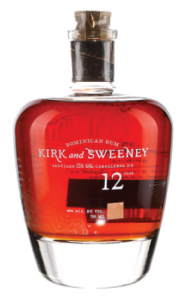 I would pair the #2 with Kirk & Sweeney 12yr rum also from the Dominican Republic. This is rich but somewhat drier than many other aged rums and it works well with the cigar’s hints of vanilla and spice. It’s a great pairing.
I would pair the #2 with Kirk & Sweeney 12yr rum also from the Dominican Republic. This is rich but somewhat drier than many other aged rums and it works well with the cigar’s hints of vanilla and spice. It’s a great pairing.
Enjoy, and Happy Father’s Day!
-Don
###
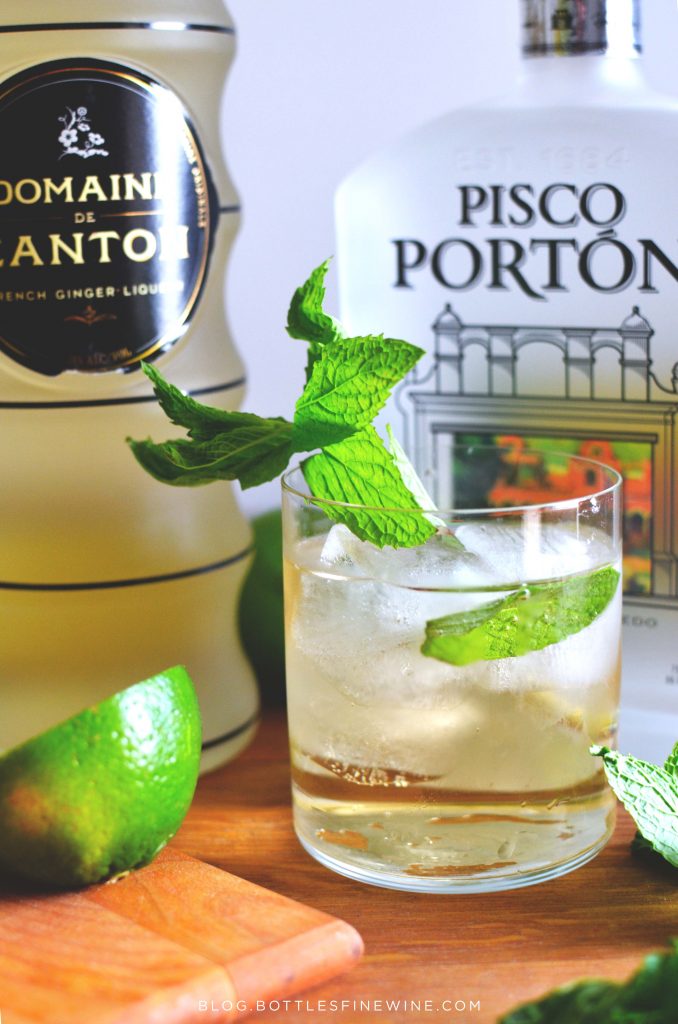
In researching South American cocktails to serve at the book signing we just co-hosted for local author Peter Andreas’s “thoroughly engrossing”** memoir Rebel Mother: My Childhood Chasing The Revolution, we came across the Chilcano. Its base is pisco, the grape brandy that originated in either Peru or Chile, depending on where you happen to be, and is traditionally mixed with lime juice, ginger ale, and bitters.
Much like the history of pisco, the backstory on the Chicano cocktail itself is up for debate. One theory holds that it was named after the chilcano de pescado, a concentrated fish soup that Peruvians consume after a long night of celebrating to restore their energy: The fresh, kicky aftertaste left by the copious amounts of lemon and fragrant herbs used in the soup is said to “raise the dead.” And like its namesake, the Chilcano cocktail accents its base with loads of citrus (lime juice) and aromatics (in this case, ginger), flavors that are said to slough off the effects of too much partying.
Whether or not you choose to believe this convenient tale, know that the Chilcano is an incredibly popular drink in Peru to this day. So much so, the country devotes an entire week to celebrating the drink in its many forms.
We had fun serving our version of the Chilcano, which amps up the aromatics with the addition of fresh mint, and an extra splash of ginger via Domain de Canton liqueur. We also added a touch of simple syrup to even out pisco’s inherent flavors, which some pisco-newbies consider too earthy. Omit the syrup if you’re already among the converted.
It’s an incredibly easy drink to make, and is perfect for hot summer nights (and the painful mornings that follow).
2 oz pisco
¼ oz fresh lime juice
¼ oz Domaine de Canton ginger liqueur
½ oz simple syrup, or to taste
4 oz ginger ale
At least 2 mint, plus more for garnish
Combine all ingredients in a cocktail shaker with ice and shake until chilled. Pour into a glass, ice and all, and garnish with more mint. Enjoy!
**That’s what The New York Times had to say about Peter’s book. And we agree. Which is why you should hop down to Books on the Square to purchase your signed copy today.
Cheers!
###
Last week we gave you a list of our no-fail rosés, those that have proven to be, vintage after vintage, reliably delicious.
Today we introduce you to a few of the newest additions to our rosé stable, those that Nick and Kate tasted for the first time just a month or so ago. They were the favorites among the many bottles that we opened a few weeks back at our annual all-staff rosé tasting, and we think you’ll love them.
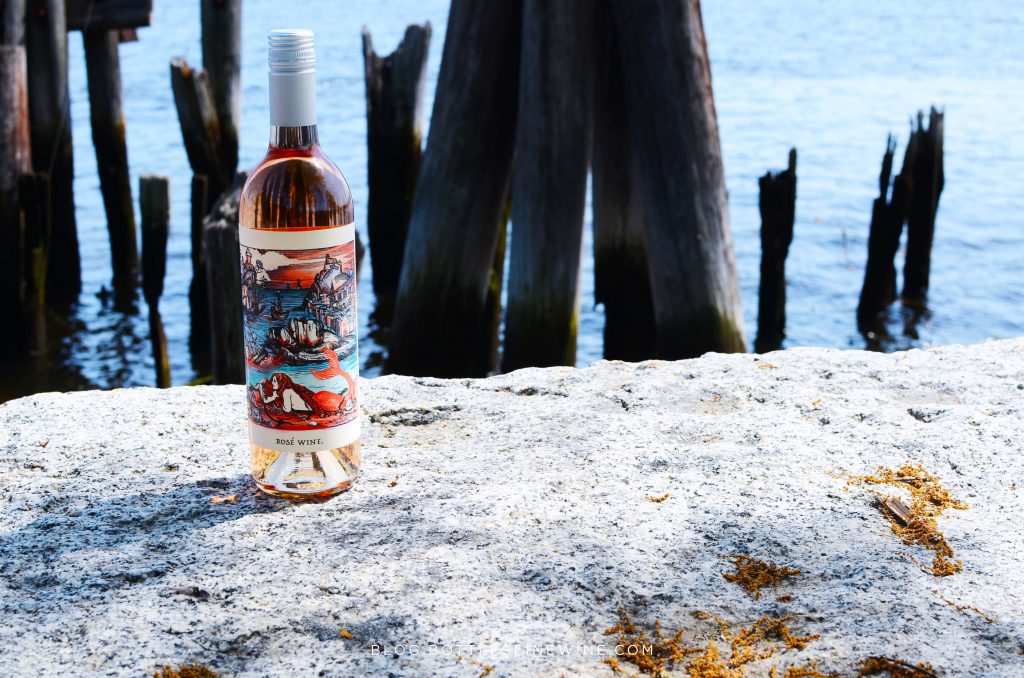 Rabble Rosé, Paso Robles, CA
Rabble Rosé, Paso Robles, CA
A big, round, fruit-driven joy of a wine. It’s not sweet, but it’s ripe, and it’s made by Rabble, formerly known as Force of Nature, also known as one of our store’s most popular vintners. $14.99
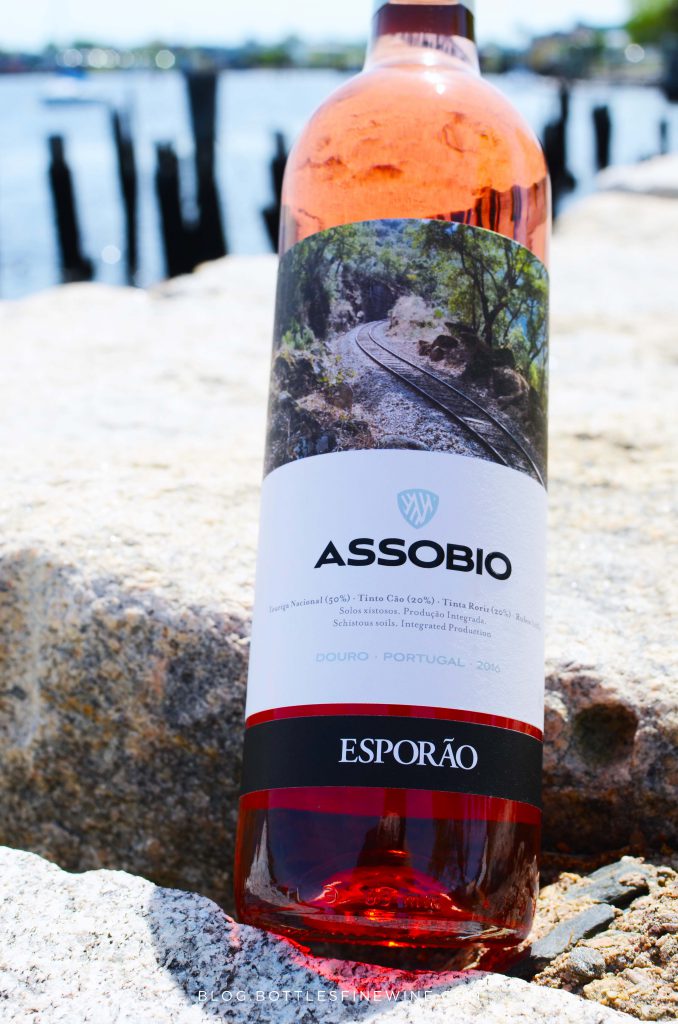 Esporao “Assobio,” Douro, Portugal
Esporao “Assobio,” Douro, Portugal
Refreshing with a delicate juiciness. It’s a crowd pleasing glass of red berries and minerals and a sister wine to the Assobio red, another of our store’s year-after-year most popular bottles.
$11.99
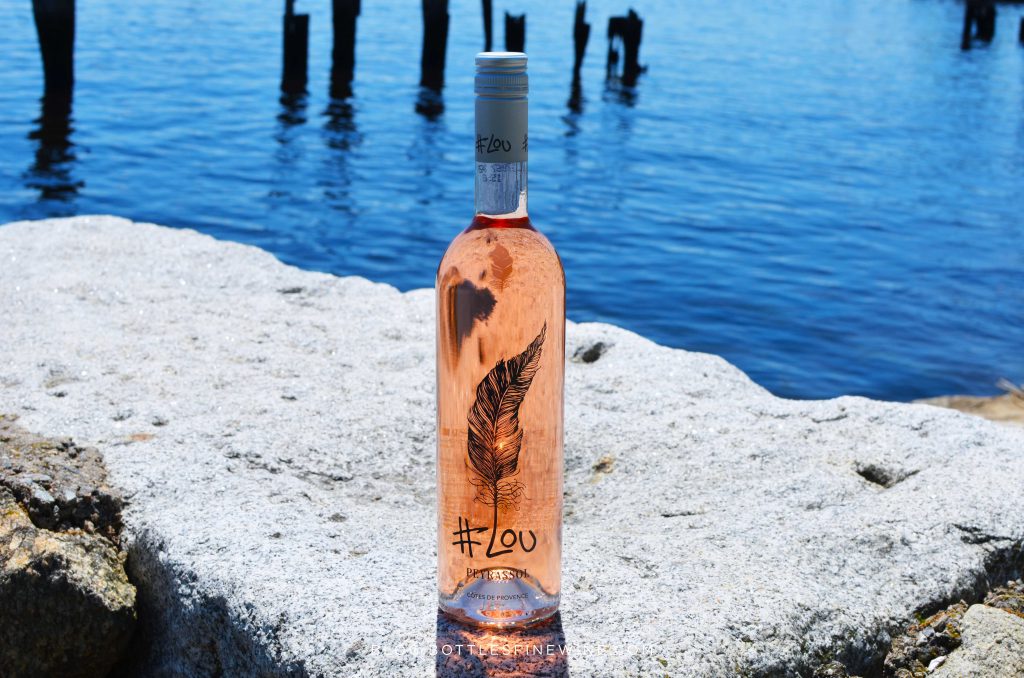 Peyrassol “#Lou” Provence, France
Peyrassol “#Lou” Provence, France
From the classic Chateau Peyrassol comes this approachable, and lower-priced, bottle. It’s crisp with delicate notes of citrus, tart red fruits, and some peach. It will pair perfectly with summer Saturday afternoons. $14.99
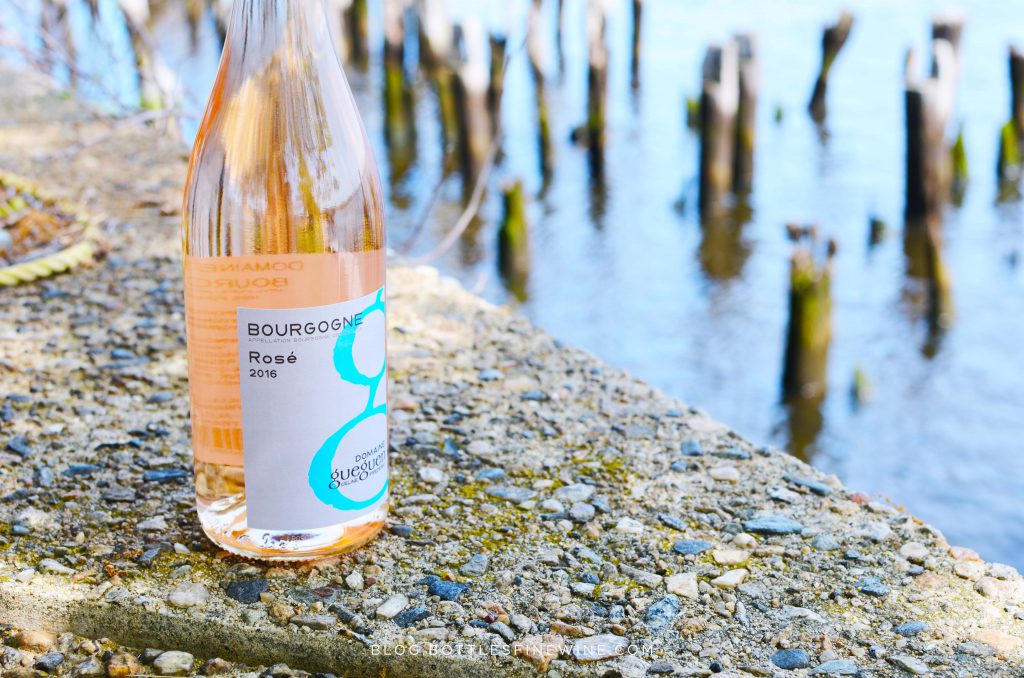 Domaine Gueguen, Burgundy, France
Domaine Gueguen, Burgundy, France
A rosé made just a few steps away from one of our favorite wine regions, Chablis. It’s dry with hints of thyme and rhubarb, peach and apricot. It’s 100% pinot noir and a steal at this price.
$18.99
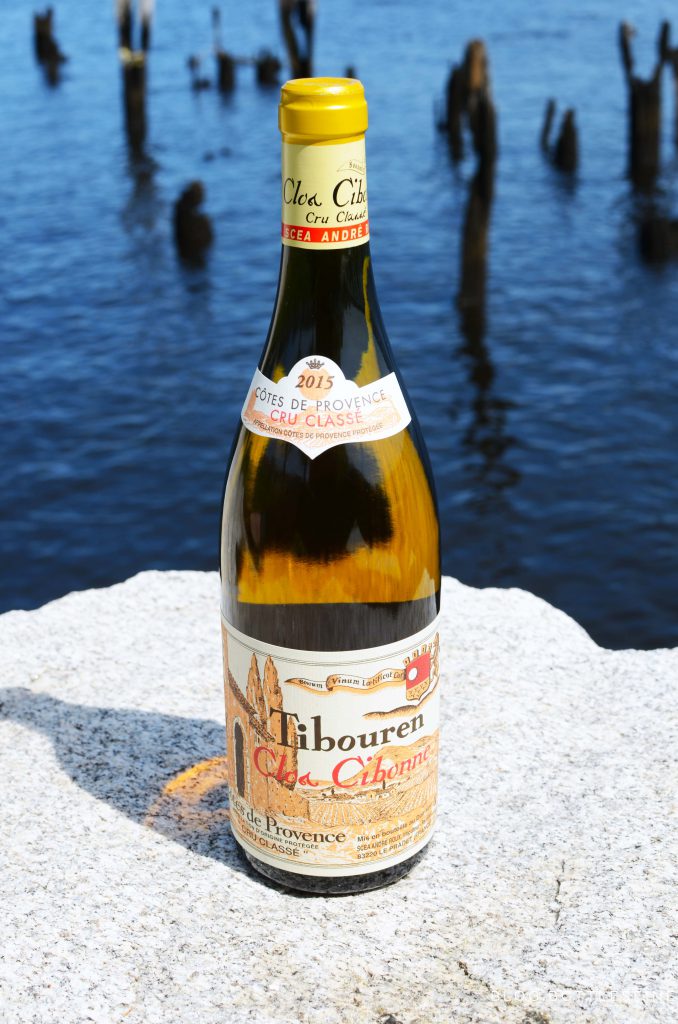 Clos Cibonne Tibouren, Provence, France
Clos Cibonne Tibouren, Provence, France
Elegant & bone dry, light but luxurious, lingering licks of bright fresh strawberry. This one will likely go down in the record books as our all-time favorite. It’s. That. Good. $27.99
All prices subject to change.
###
You know, we’ve been in this business for a long time now and we’ve seen a thing or two. And yet we’re still amazed by the phenomenon that rosé is. And with good reason: there are hundreds of bottles that are finely-crafted, extraordinarily food friendly and absolute true pleasures to drink. Yet there’s also a sea of rosés that miss the mark. We’ve found far too many that just wouldn’t deliver for your hard-earned dollars.
To help guide you to those that are reliably delicious year after year, we’ve selected those that we can confidently say are true classics: they’re well-made, trustworthy bottles (and a can!) that over-deliver superior enjoyment vintage after vintage. And here they are:
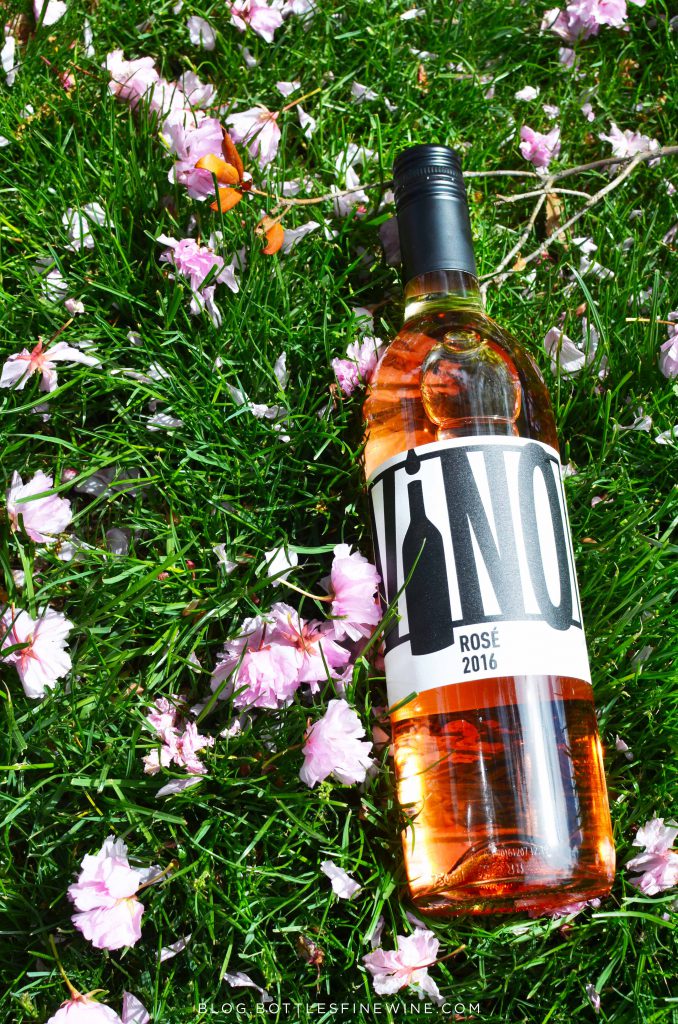 Charles Smith “Vino,” Washington State
Charles Smith “Vino,” Washington State
Deliciously tinged with tangerines and rose petals. “One sip and you can feel the summer sun on your face.” $13.99
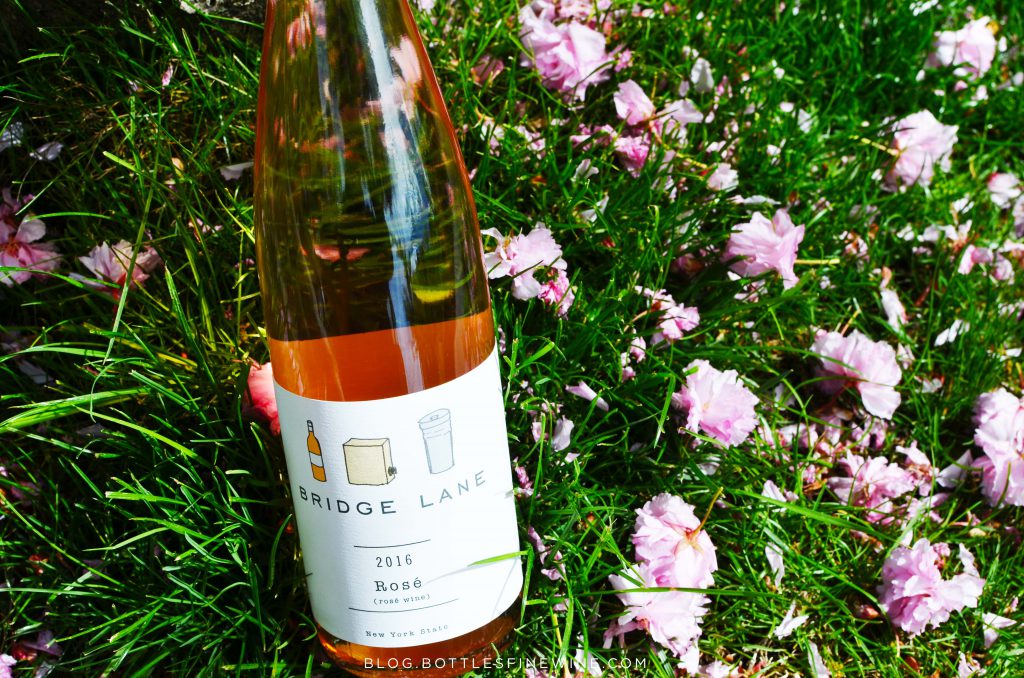 Bridge Lane, North Fork, New York
Bridge Lane, North Fork, New York
Guava, peach blossom, watermelon & strawberry. A North Fork of Long Island stunner.
$15.99
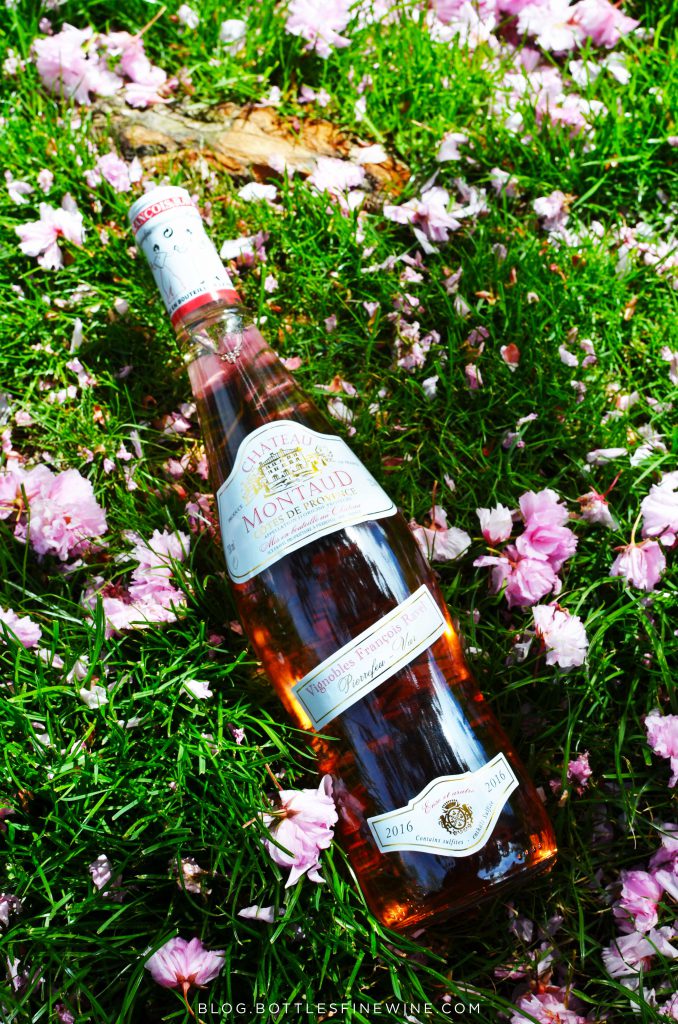 Chateau Montaud, Provence, France
Chateau Montaud, Provence, France
So very light. So very strawberry. So very awesome. $12.99
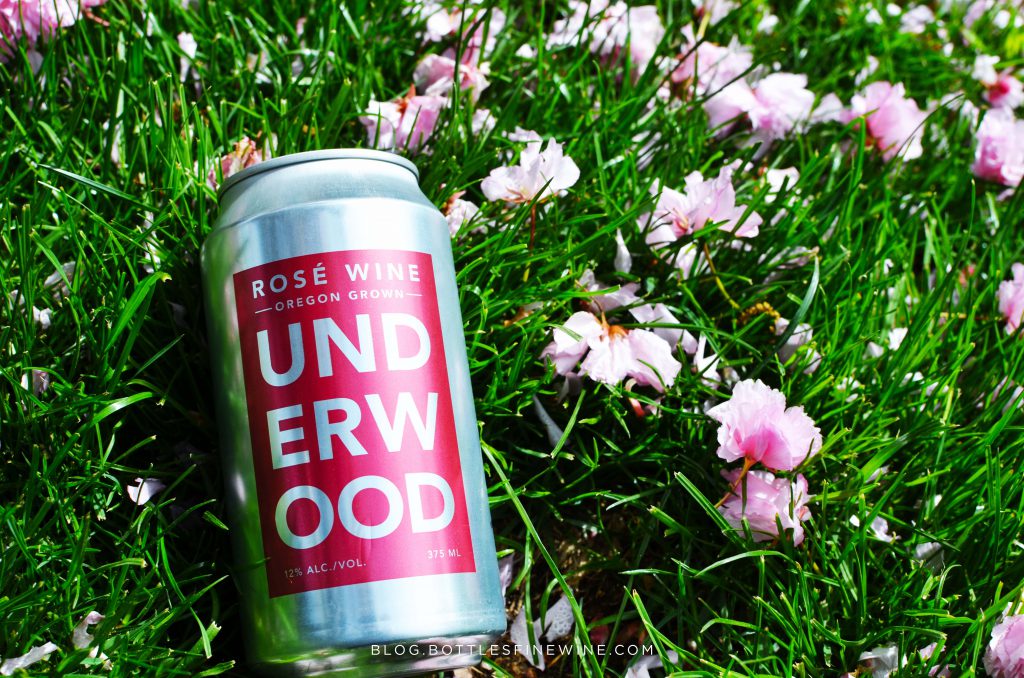
Underwood, Oregon
It’s the clown-car of rosés: so much fun in one little vessel. It’s fruity, refreshing and dare we say a touch sweet. $7.99
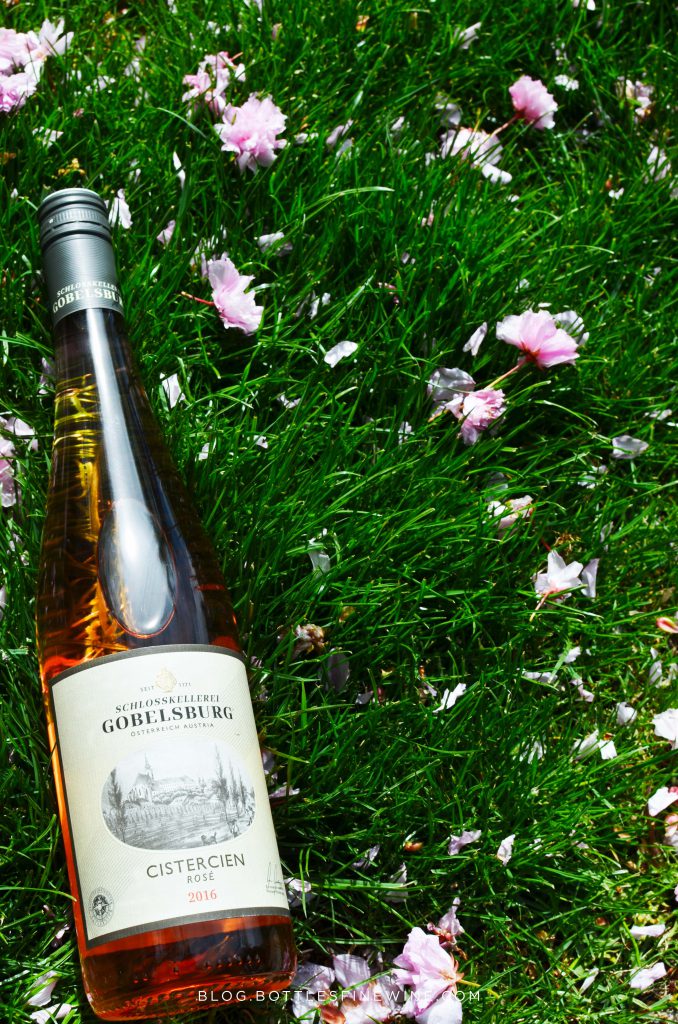 Gobelsburg, Austria
Gobelsburg, Austria
Spritzy, pure, delicate and oh-so food friendly. In fact we’re not sure there’s a dish that wouldn’t pair well with this Austrian rosé. $17.99
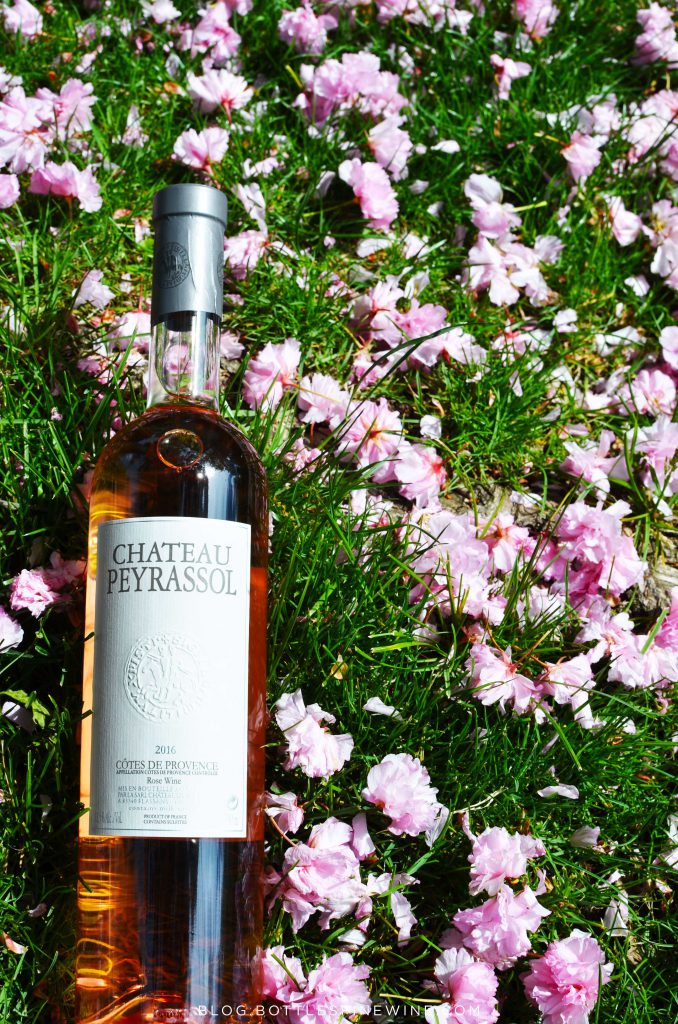 Chateau Peyrassol, Provence, France
Chateau Peyrassol, Provence, France
The king of the classics. Round with flavors of peach and pear skin. It’s pure elegance in a bottle. $29.99
Stay tuned next week for more of our favorites, all new to Bottles this year.
Liam and Eric recently returned from a trip to Kentucky in search of private barrels of Bourbon that will be sold exclusively at Bottles. The barrels will be in store within a matter of months, so to tide you over, here are a few highlights from the guys’ trip:
Day One
Welcome to Kentucky! We arrived just in time for an early lunch at Mammy’s Kitchen in Bardstown (Liam had a hot brown, and Eric had the country ham plate with fried apples and green beans, and “coffee”) before heading off to the Willett Distillery.
The iconic Willett copper pot still is glorious. It was great to see how hands-on the distillery is in this highly technological age. Once made, all of Willett’s bourbon is transferred by hand into the barrels and weighed on a big manual scale (at the bottom of the photo) before being rolled into the rickhouse to age.
Willett isn’t yet available in RI – but perhaps soon!
Next stop: Maker’s Mark, where Eric did a thorough inspection of the private barrels in their new warehouse. Dug into the limestone hills, it was built to house their barrels of Maker’s 46, which require a 9-week cold aging process to finish. The private barrels that are aged there are finished with a different type of oak staves for 9 weeks. The wax dipping line was pretty cool to see, though the lady on the left wasn’t all that impressed with Eric.
Fun Fact: All of the trees outside of the distilleries are black. This is due to a whiskey fungus called Baudoinia. As barrels age in their warehouses, the liquid inside evaporates – the ‘angel’s share.’ This evaporate is full of ethanol, which Baudoinia feeds on. Since ethanol is denser than air, the angel’s share actually moves along the ground, and as soon as it hits anything moist (which there’s plenty of in the damp morning Kentucky dew) the fungus sticks and goes to work. Tree bark makes an especially good breeding ground. These lovely trees in bloom at Maker’s Mark show what we mean.
After a taxing day of bourbon tasting and dinner we were off to taste more whiskey! Here’s a shot from our barstool perch at Haymarket in downtown Louisville. That’s 300+ bottles of whiskey you see there, including the full cadre of Pappy and the antique collection, about 12 private barrel Four Roses, a bunch of stuff that isn’t made anymore and a lot more. We tried their own private barrel of Four Roses (picked by the Haymarket staff and Jim Rutledge the day before he retired). We needed a “calibration” on Four Roses before we headed over to pick out our own barrels. Also, their “well” bourbon is Heaven Hill 6-year – only available in KY. We might have had to bring some back with us.
Day Two brought us to the Heaven Hill distillery. One of many highlights from our trip was stumbling upon our very own private barrel of Elijah Craig, number 5017812, which we selected from a slew of samples last month. Our guide was astounded – hundreds of barrels move throughout the facility each day – the chance that we were here on the one day that our barrel was in line for bottling was one in thousands. It’s bourbon kismet! It’s also how we found out it’s 10 years old. Not quite 12 years, but not too bad for some pretty good juice. We grabbed a sharpie and signed it. Keep your eyes open – it will be in store before you know it.
We then watched as barrel number 7673766 was rolled onto the line to be filled with new make whiskey. Once filled, it was carted off to the rickhouse to age anywhere from 4 to 30 years. Heaven Hill numbers their barrels sequentially, so this tells you they’ve produced over 7 million barrels. They come in one door to be filled, and robots pack them onto a truck to be moved to the rickhouse. The second photo below is a huge pile of what comes out after the barrels are dumped. It’s bits of charcoal from the charred barrels in which the bourbon was aged that need to be filtered off before bottling. It was still damp from however many barrels were dumped that day, and smelled amazing.
Another astounding sight was that of the distillery warehouses themselves. The shot below is of just 4 of the 53 Heaven Hill rickhouses. The photo shows 7 stories of bourbon barrels, thousands of barrels in each – and these aren’t even the largest on the property. Over a million barrels are aging at Heaven Hill right now. These rickhouses caught on fire in 1996, sending rivers of flaming bourbon cascading down the hill, exploding barrels shooting overhead like fireworks. It’s very difficult to give a sense of scale, but these things are huge – gargantuan behemoths of bourbon rising over the horizon as you drive through the Kentucky countryside. Our heads came to about halfway up the bottom row of windows. The smell in the air was quite literally intoxicating.
Next stop was to Jim Beam to select a barrel of Knob Creek. We got to open 3 samples ourselves, popping the bung out with a giant hammer, and sampling them fresh and raw right from the barrel. The difference in flavor from barrel to barrel is always surprising. Two of our samples were aging right next to each other, but couldn’t have been more different. We chose barrel C06B22, which was aged in Warehouse K (which abbreviated in the photo looks like “whiskey,” doesn’t it). The code on the barrel tells where the bourbon was made and its age: C is for the city of Clermont where it was distilled, 06 is for 2006, B is the second month of the year, and 22 is the day of the month. February 22, 2006. Our barrel is 11 years and almost 2 months old! It’s older than our store!
We then went to Copper & Kings brandy distillery where (as we wrote about last month in our blog) the distillery pulses music via 5 major sub-woofers into their aging room. Unlike bourbon, brandy doesn’t like the temperature fluctuations that force the liquid in & out of the barrel staves – it’s too harsh for the delicate fruit flavors. In France, for instance, they will often rock the barrels by hand to agitate the liquid. At Copper & Kings, they use musical vibrations to jostle the booze in each barrel, allowing for more contact time with the wood. Sonic aging! You can see where they are aging brandy in ex-beer barrels as well. We were there on Al Green’s birthday, so it was Al’s tunes all day. That’s going to be some sexy brandy!
Next stop was at Four Roses, where we selected two private barrels. While there, we had the great opportunity to hang out with Al Young, Four Roses’ newly-minted Senior Brand Ambassador. He’s a great guy to know, and he even co-signed the barrels we chose for ya’ll back in little Rhody. We chose the OESQ recipe, one that hasn’t gotten a lot of attention, but there are barrels that are just starting to hit their mark. We had a chat with Brent Elliot (who recently took over as Master Distiller from legend Jim Rutledge) about the barrel, which he personally selected as a sample for this program. He was excited that we chose it, and mentioned that several “Qs” had caught his eye recently (you can read more about the different Four Roses recipes and the significance of ‘Q’ yeast on their website. Our barrel has a nice interplay of flavors and is not too hot on the finish. It helps that it comes from warehouse M, rack 8, 6 high, so pretty much right in the middle of the warehouse – the sweet spot.
We mentioned that we bought 2 barrels…so what about the second one? It’s a surprise! But you’ll find out soon enough. We can’t wait for you to try them.
On Day Three we mozied over to the old Stitzel-Weller distillery – where Julian Van Winkle (the first Pappy) began the modern bourbon craze all those years ago. Though the distillery is in the process of being modernized, they still have some of the original buildings. Imagining Pappy walking through that exact door was pretty cool. The iconic Old Fitzgerald smokestack was great to see in person.
We then went to the unbelievable Vendome Copper & Brass works, where almost 100% of the fermentation equipment for distilleries in the country (even that used by Rhody’s own Sons of Liberty) is made. The craftsmanship is amazing. Each still is a unique piece – and while they are 100% functional, they are complete works of art in and of themselves. The facility isn’t open to the public – we were so thrilled to have had a guided tour through it.
Later in the day we watched as artisans made barrels at the Brown-Forman Cooperage. The most important part of the bourbon aging process is the barrel, so to be able to see how they’re made was a rare treat. Brown-Forman makes their own barrels for Woodford Reserve, Old Forester, and Jack Daniels, among others. The barrels are charred with incredible heat for about 40 seconds. These barrels are right in the middle of their charring, and it was hot by the kiln. The char is what helps filter the bourbon and give it its distinctive golden caramel coloring. One of the most skilled jobs in the cooperage is that of fixing issues on defective barrels. This talented gentleman is replacing a split stave with a new one.
We ended our trip with a visit to Buffalo Trace where we saw their indescribably huge (seriously – we couldn’t get a great shot) fermenters. They have 12 of them. Each is 3 stories tall and holds 92,000 gallons. Each. They were full & bubbling. The sheer size of them made us truly wonder why it’s so hard to get their bourbon – where is it all going? Or is it all still aging?
The bottling line for Blanton’s Single Barrel is tucked away in a quiet corner of the distillery grounds. When the barrels are ready, they are individually vatted & proofed, hand bottled one-by-one, hand numbered, etc. It truly is a gem of a hand-made Bourbon. Wish we could get more of it at the store, but when you see the small number of bottles that each barrel yields, you can understand why it’s so hard to come by.
We couldn’t have asked for a better way to end the business side of our trip than a visit to ‘Bourbon Pompeii’. Not open to the public yet, this is the excavation of the ORIGINAL O.F.C. distillery from 1873, built by Colonel E.H. Taylor, Jr. The history is amazing. Those big square holes were 12 copper-lined big fermentation tanks, and there is some sort of cistern (no one knows what that was for yet). It was a step into history that few get to see.
We couldn’t leave Kentucky without a trip to a race track! Before heading to the airport we made a pit stop at Keeneland for the Maker’s 46 Mile. Liam bet on horse 6, ‘Conquest Panthera’ & won $2! Eric bet on horse 4…
We saw a ton during our time in Louisville, more than we have room to share here. We had lovely visits with the Alltech Brewery & Distillery (makers of the popular Kentucky Bourbon Barrel Ale and Town Branch Bourbon), Woodford Reserve, Against the Grain Brewery, and other hot spots around town. We tried some amazing bourbons, met some very cool people, and found some very tasty whiskey to bring home and share with all of you. Keep your eyes peeled over the next few months for the arrival of our private barrels, and your own taste of the best Kentucky has to offer.
###